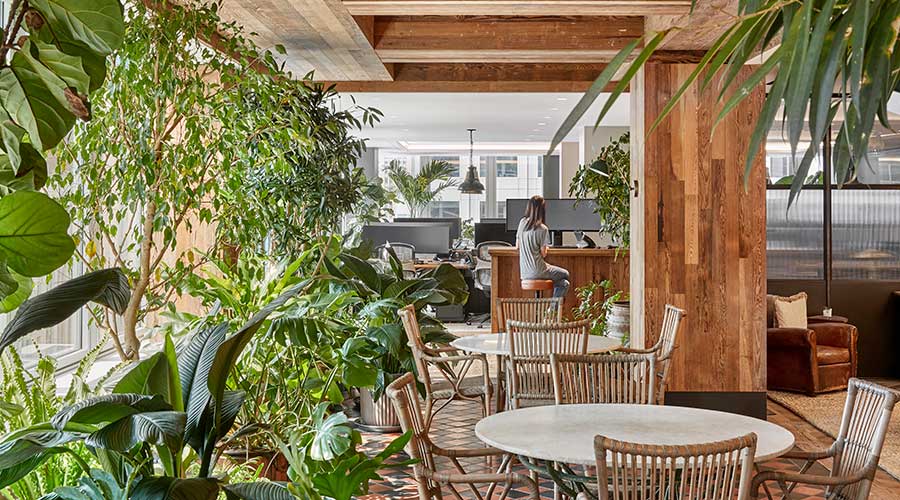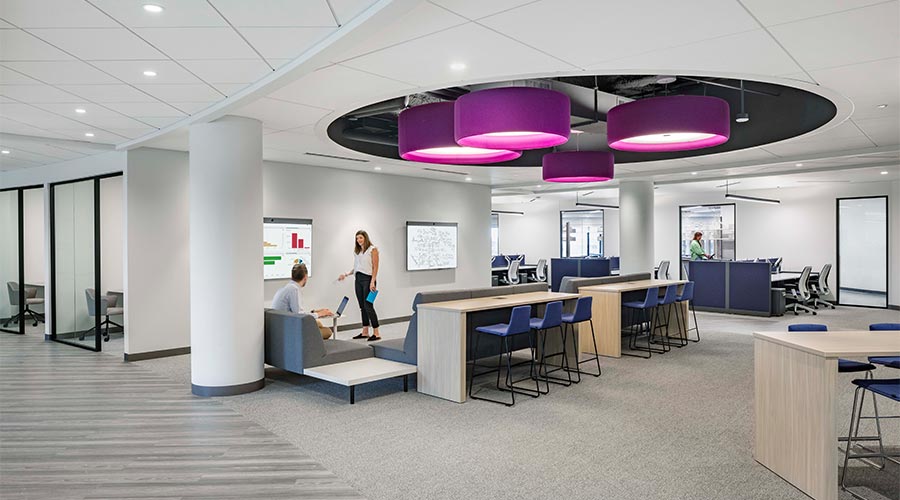Open Office Spaces Spur Collaboration at All Types of Companies
Many companies that are interested in open office spaces to spur collaboration are media or technology companies, such as Google or Facebook, where open office space is the norm. But Rosenblatt says that even traditional types of companies with young employees see the benefit of working in open spaces.
Rosenblatt points to a law firm started by individuals in their late 20s and early 30s, all of whom left larger firms. They collaborate much more than they did at their previous jobs, and they do so in open areas. The firm has private offices because of the confidential nature of its work, but it also has open, collaborative spaces, along with a café where coworkers can strategize and socialize with each other, as well as their clients. "This company is forward looking and knows how to make an impression, and yet it's a traditional one that's not a media or tech company," Rosenblatt says. "They see (the open design) as being an advantage."
Workspace Culture
The decision to have an office designed for collaboration is driven by the work that's conducted in that office and the culture of the office, says Lewis Goetz, principal and vice president in Leo A Daly's Washington, D.C., office.
"When it's culturally driven, there's a much stronger acceptance and adoption by the younger generation and across the board," says Nelson's Miciunas. "There's much more acceptance that you don't need your own space and as long as people have access to what they need when they need it, they are happy."
The most successful open workplaces have a variety and wide range of spaces, mixing open areas with spaces that also allow for private or confidential conversations, say experts. But beyond that basic principle, any open space design can work — from rows of long benches with no office space to a mix of open space, a few small- and medium-sized offices and a library — as long as it's right for the company or organization, experts say. There is no cookie cutter design that works for everyone, they stress. "The basic point being that open office plans don't automatically result in collaboration," says Dean Strombom, a principal and architect with Gensler.
One goal for many open, collaborative work environments is paradoxical: structuring the design to encourage spontaneity. "The focus has come because people are seeing the beauty of impromptu conversation versus planned because it's a different conversation," says Denise Cherry, director of design for Studio O+A in San Francisco. "It works particularly well with large companies because some departments never see each other. So how do you create a plan that forces the serendipitous interaction? A good idea can come from anyone in any department, so how do you facilitate that?" Spaces for spontaneous conversations range from cafés or coffee bars to areas alongside corridors with casual seating; an entire wall may be a whiteboard.
Related Topics:











